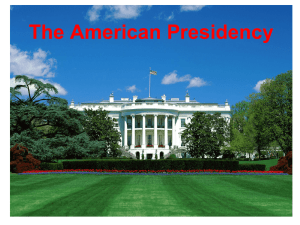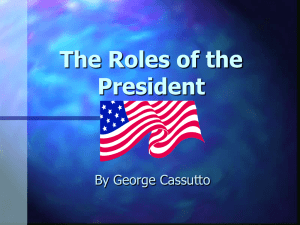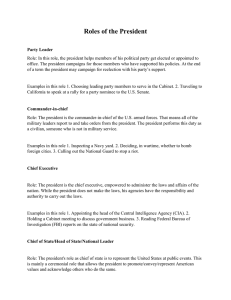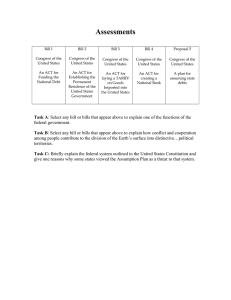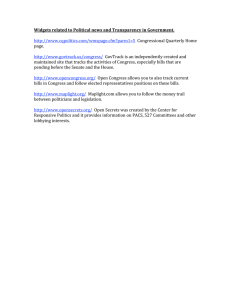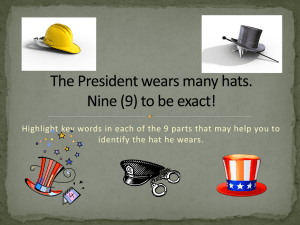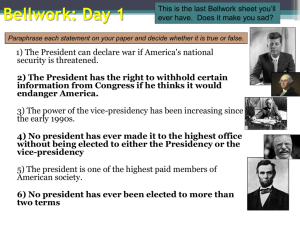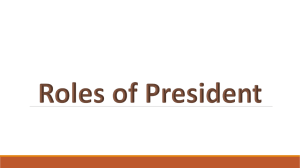The Roles of the President
advertisement
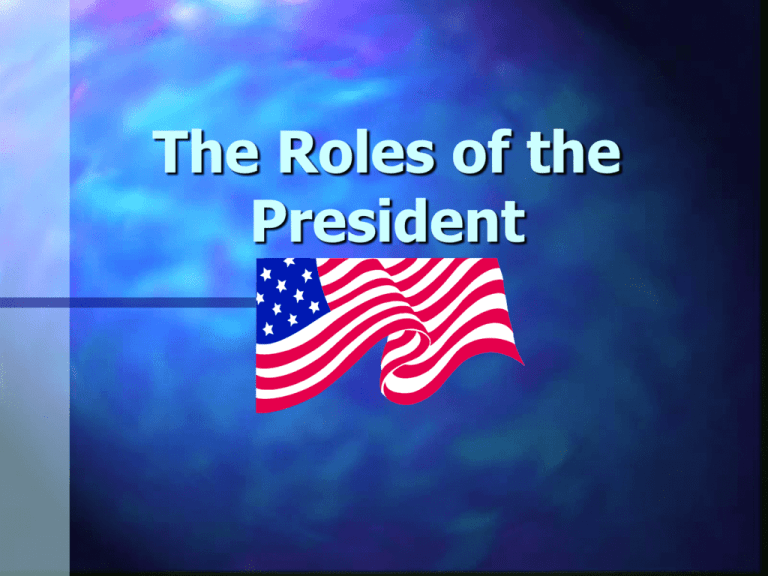
The Roles of the President Role: Chief of State Acts as example for and symbol of the United States Represents America at special occasions and ceremonies. Kings and Queens are heads of state. Awarding medals and speechmaking are examples of this role. Role: Chief Executive Acts as boss of federal government workers in 14 executive departments. These departments help the President carry out, enforce, or execute the law. The president chooses cabinet members to advise and assist him. Example: Holding cabinet meetings and appointing federal officials. The Chief Executive The Offices of the Executive Branch are found in the White House and other federal buildings in Washington D.C. Role: Chief Diplomat Conducts foreign policy by directing the actions of American ambassadors. Signs treaties and trade agreements with leaders of other nations. Role: Commander-In-Chief In charge of US Armed Forces. President decides where armed forces are to be stationed, weapons to be used. Secretary of Defense under President. Chairman of the Joint Chiefs is the top military commander under President. Role: Chief Legislator Congress has the power to make laws. President can propose bills and must sign bills into law. He often calls members of Congress to lobby for his agenda. Presents his agenda to Congress in the annual State of the Union address. Role: Chief Legislator President Reagan before a joint-session of Congress. Role: Chief of the Party Presidents help members of their party get elected or appointed to office. They make campaign speeches needed for re-election. Head of fund-raising for the party. Chief Guardian of the Economy Monitors – unemployment, – Inflation, taxation, business, – and general welfare of the nation. – He does not control the economy, but he gets credit if it goes well. The Presidency Why do you think it is the most visible part of the American political system? Does the President really serve the needs of the American people? How does the office of the Presidency actually help the American people?
